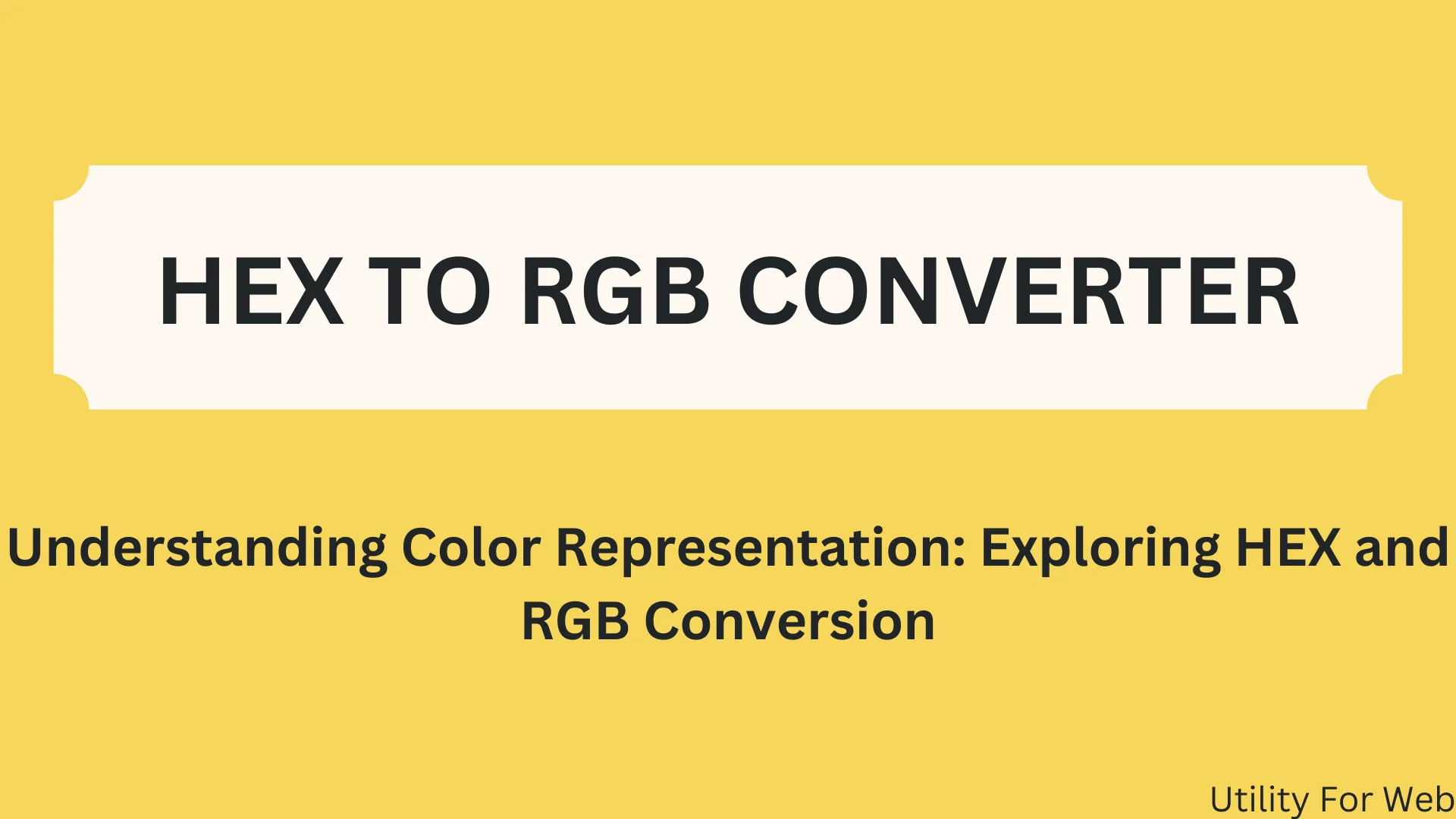
Convert Hex into RGB Easily with Our Hex to RGB Calculator
Color plays a crucial role in digital design, making it essential to understand different color representations. Two of the most widely used color systems are HEX and RGB. Converting between these systems is a fundamental skill for designers and developers. In this blog, we'll explore the intricacies of converting hex into RGB, the utility of a hex to RGB converter, and how a hex to RGB calculator can streamline the process of changing hex to RGB.
What are HEX and RGB Color Codes?
Before diving into the conversion process, it's essential to understand what HEX and RGB color codes are and how they function.
HEX (Hexadecimal Color Codes): HEX codes represent colors using a six-digit combination of numbers and letters, starting with a hash symbol (#). This system is based on the combination of red, green, and blue (RGB) values. For instance, the HEX code for white is #FFFFFF, while black is #000000.
RGB (Red, Green, Blue): The RGB color model creates colors by blending red, green, and blue light in varying intensities. Each component's intensity is measured on a scale from 0 to 255. In RGB terms, white is (255, 255, 255), and black is (0, 0, 0).
The Need to Convert HEX to RGB
Different design tools and platforms may require different color codes. While some use HEX codes, others may need RGB values. Understanding how to convert hex into RGB ensures consistency across various media and applications. It also facilitates precise color adjustments that may be easier in one system over the other.
Using a HEX to RGB Converter
One of the simplest methods to convert hex into RGB is by using an online hex to RGB converter. These tools are user-friendly and efficient. By entering a HEX code, the converter instantly provides the corresponding RGB values, making it ideal for quick conversions during design projects.
How HEX to RGB Conversion Works
Understanding the conversion process from a technical standpoint can be beneficial. Each HEX code is composed of three sets of characters, each speaking to the escalated of red, green, and blue in hexadecimal organize.
- Extract the HEX code: Consider the HEX code #1A2B3C.
- Split the code into pairs: The code can be split into 1A, 2B, and 3C.
-
Convert each match to decimal: This includes changing over the hexadecimal values to decimal:
- 1A (hex) = 26 (decimal)
- 2B (hex) = 43 (decimal)
- 3C (hex) = 60 (decimal)
- Combine the values: The resulting RGB value is (26, 43, 60).
The Role of a HEX to RGB Calculator
For designers handling multiple color conversions, a hex to RGB calculator can be invaluable. These calculators often offer batch conversion capabilities, color previews, and the ability to save and export color schemes, enhancing efficiency and accuracy in design workflows.
Practical Applications of Converting HEX to RGB
Knowing how to change hex to RGB has numerous practical applications in digital design:
- Web Design: While CSS uses HEX codes for color definitions, some advanced web effects or scripting may require RGB values.
- Graphic Design: Tools like Adobe Photoshop support both HEX and RGB inputs, providing flexibility in color management.
- Game Development: RGB values are commonly used in game engines for color manipulation in lighting and shaders.
Advanced Tools and Resources
Beyond basic converters, advanced tools and resources are available to facilitate hex into RGB conversions. These tools may include features such as color palette generation, accessibility checks, and integration with popular design software. Leveraging these resources can significantly improve your design process's efficiency and accuracy.
Conclusion
Mastering the conversion of HEX to RGB is essential for digital designers. Whether using a hex to RGB converter, a hex to RGB calculator, or manually changing hex to RGB, understanding this process ensures your designs maintain color consistency and adhere to platform requirements. By using the appropriate tools and gaining a deep understanding of these color systems, you can enhance your design projects and achieve professional results.



